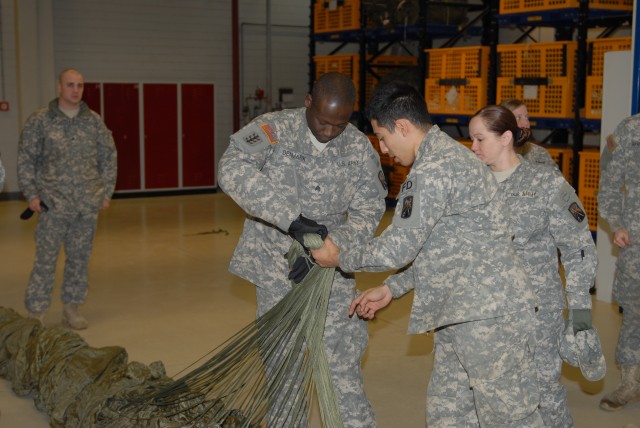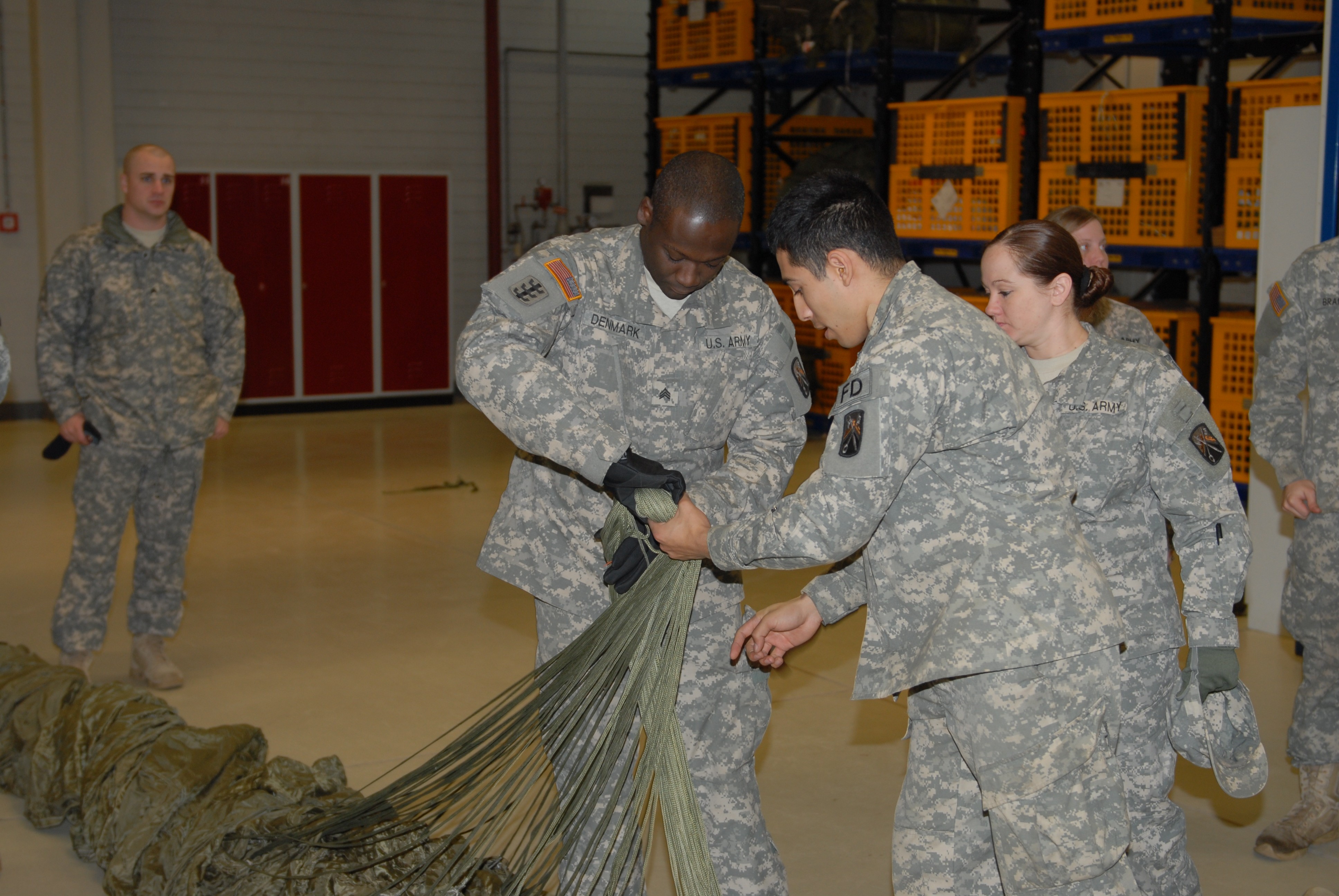
KAISERSLAUTERN, Germany -- The 18th Combat Sustainment Support Battalion, 16th Sustainment Brigade sling load team conducted training with riggers from the 5th Quartermaster Detachment, 21st Special Troops Battalion, at Rhine Ordnance Barracks here, Nov. 29-30, in order to get a better understanding of how to unhook cargo after an airdrop and rig the cargo for helicopter pickup.
"We are showing them what the loads look like before they are dropped and giving them a class on how to recover a cargo parachute," said Sgt. Corey L. Goss, an aerial delivery shop foreman with the 5th QM Det.
"It is important for us to be here so we can understand how everything is rigged and what happens before it goes down so we know how to recover the parachutes safely and prepare them for the next mission," said Staff Sgt. Kenneth James, the sling load team noncommissioned officer in charge with the 23rd Ordnance company, 18th CSSB, 16th Sust. Bde.
Once the cargo has been dropped it needs to be derigged from the aerial delivery platform and set up in a different configuration to allow for helicopter pickup.
"Each time we do a drop we incorporate our sling load teams in the rigging process so they know how to put it together, which helps them take it apart when it's on the ground," said Chief Warrant Officer 2 Ismael Ramosbarbosa, 16th Sust. Bde. senior airdrop systems technician. "They can't just take a knife to the straps; they need to know how to unrig the equipment from the platform and parachutes in order to rig the equipment for helicopter pickup."
There are various types of aerial delivery platforms used for different types of loads.
"The type of platform that we rigged this time is just to make our sling load team more versatile," said Ramosbarbosa. "So they can see another type of delivery device and be familiar with it."
"We are rigging three, type V platforms, which is a metal platform 8 feet by 108 inches and weighs 820 pounds and can sustain up to 8,000 pounds of cargo," said Goss. "Each platform will have two 500-gallon water blivits and two G-11 parachutes, which is a 100-foot diameter cargo parachute that can sustain a 5,000-pound load safely to the ground."
"In the containerized delivery system configuration, which we have used on the previous drops, we are limited to how much we can drop," said Ramosbarbosa. "Some of the equipment that the CSSBs have cannot be put on a CDS platform."
The purpose of the airdrop is to allow the Soldiers practice at setting up equipment for sling load onto a helicopter.
"We have two more drops planned right now," said Ramosbarbosa. "One in February and one in June; the one in June will have the helicopters to actually pick up the cargo after the drop unlike the previous drops where we just simulated the helicopters."
With all the training that Soldiers do when they are not deployed, it is important to remember that the training is for real world missions that are essential to maintaining the combat effectiveness of the U.S. Armed Forces.
"This type of training is necessary because there are locations where we can't get supplies to our Soldiers out there by normal means because of the terrain," said James. "This gives us the ability to airdrop supplies close to where the Soldiers are and have them taken the rest of the way by helicopter so we can sustain the fight in any type of terrain."
"The Soldiers are doing outstanding," said Ramosbarbosa. "The Soldiers who make up the sling load teams came into this mission without any airborne operations, delivery or recovery experience. We established the program to have a crawl, walk and run phase. Right now, the teams are in the walk phase of the program, but we are heading in the right direction."

Social Sharing